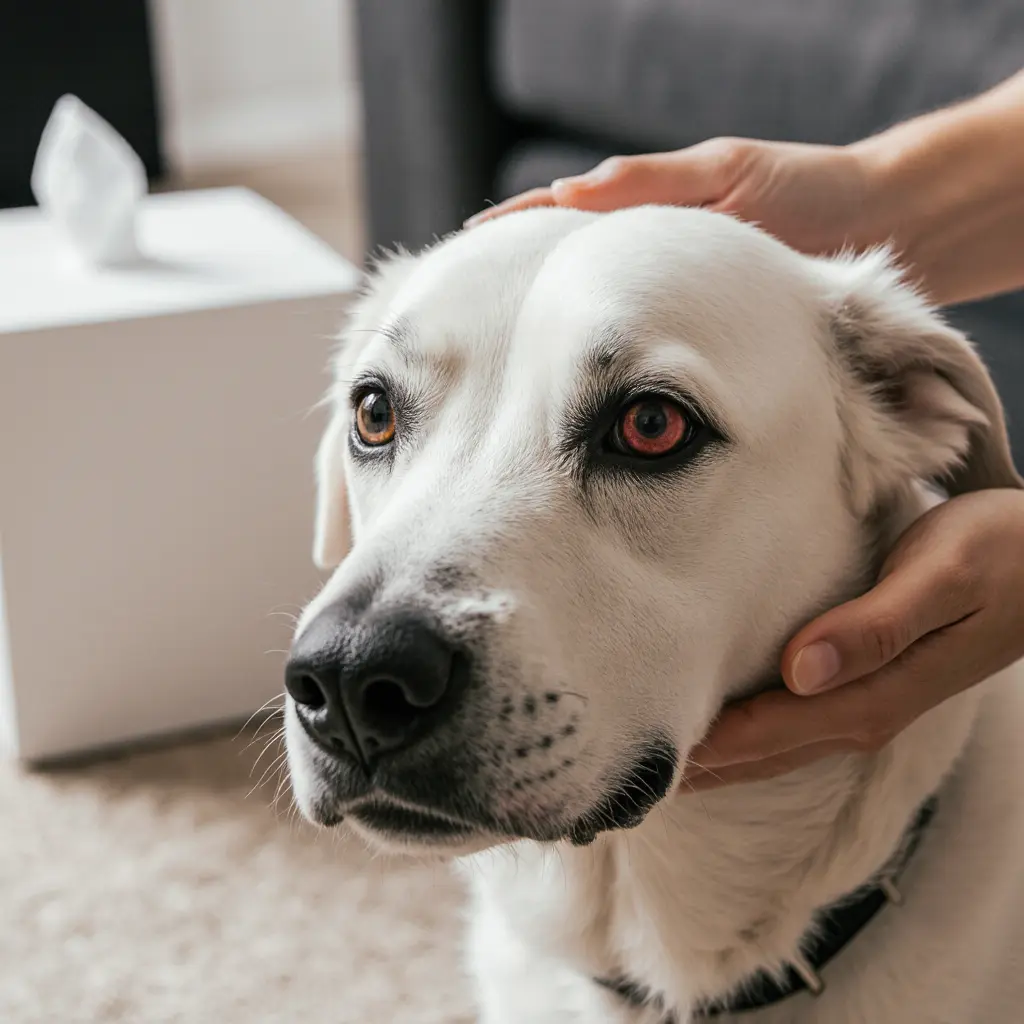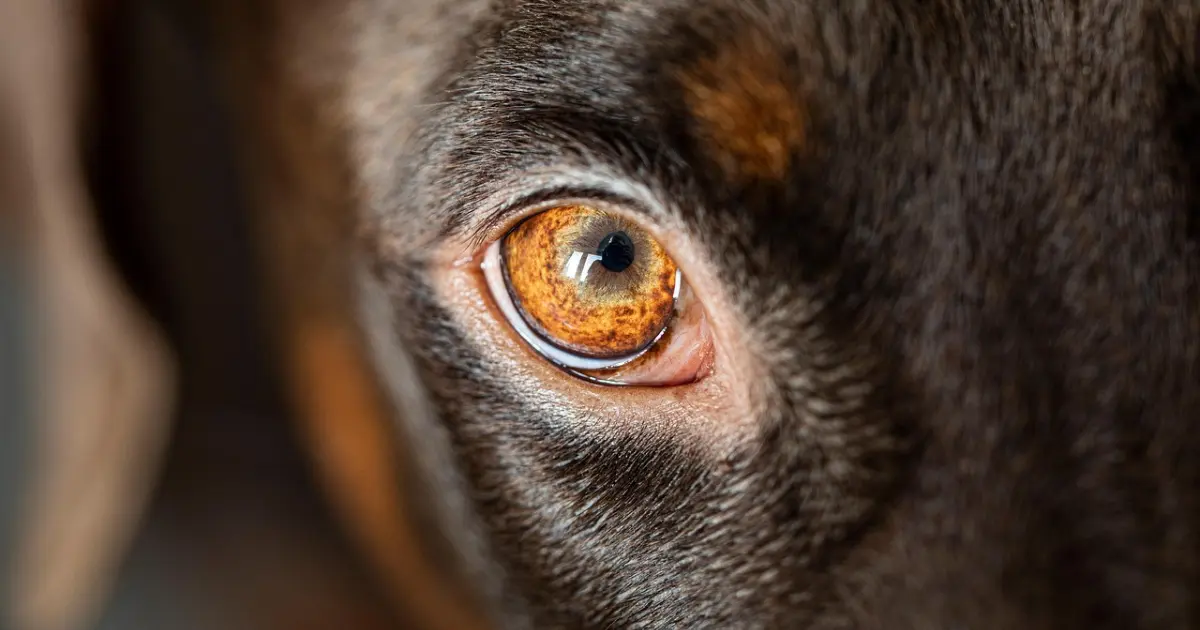Dog Eye Infection: Can Dogs Get Pink Eye? Symptoms and Causes Explained
Can dogs get pink eye?
Imagine this: your happy, tail-wagging pup suddenly starts squinting. You notice a bit of redness around their eyes, maybe some discharge, and they’re pawing at their face more than usual. It tugs at your heartstrings, doesn’t it? When your dog looks at you with those irritated eyes, it can be hard to know what to do. Could it be pink eye?
Yes, dogs can get pink eye, and just like with humans, it can be uncomfortable and even painful if left untreated. This article is here to help you spot the signs, understand what causes it, and take the right steps to care for your four-legged friend.

Table of Contents
Can Dogs Get Pink Eye? Understanding Canine Conjunctivitis
What Is Pink Eye in Dogs?
Pink eye, medically known as conjunctivitis, is an inflammation of the conjunctiva—the thin membrane that covers the white part of the eye and the inside of the eyelids. It’s more common than most dog owners realize, and it can show up in various forms:
- Allergic Conjunctivitis – triggered by allergens like pollen, dust, or mold
- Bacterial Conjunctivitis – caused by bacteria, often contagious
- Viral Conjunctivitis – spread through airborne viruses or direct contact
- Foreign Body-Related – due to dust, grass, or tiny debris irritating the eye
Is It Contagious?
The answer depends on the type. Bacterial and viral conjunctivitis are contagious and can spread to other pets. In rare cases, some bacteria can be transmitted to humans. Allergic and irritant-based conjunctivitis, however, are not contagious.
Knowing the cause can help you take proper precautions for your home and other pets.

Dog Eye Infection Symptoms to Watch For
Common Signs of Pink Eye in Dogs
Your dog can’t say, “Hey, my eye hurts!” so it’s up to you to notice the signs. Symptoms often include:
- Red or pink tint in the whites of the eyes
- Clear, yellow, or green discharge
- Excessive blinking or squinting
- Puffy or swollen eyelids
- Pawing or rubbing at the eyes
- Crust around the eyes in the morning
When Should You Call the Vet?
You shouldn’t wait too long if you notice:
- Persistent symptoms beyond 24-48 hours
- Eye discharge turning thick or foul-smelling
- Signs of pain or vision loss
Always trust your gut. If your dog looks uncomfortable or the symptoms worsen quickly, a vet visit is the safest move.
What Causes Pink Eye in Dogs?
Pink eye can have multiple triggers. Understanding the root cause helps with treatment and prevention.
Top Causes:
- Allergies: Pollen, dust mites, mold, and food allergies can inflame your dog’s eyes.
- Bacterial Infections: Often caused by injury or exposure to contaminated surfaces.
- Viral Infections: Spread through air or shared bowls and bedding.
- Foreign Bodies: Tiny particles like dust, sand, or plant seeds can scratch or irritate.
- Irritants: Smoke, shampoo, cleaning agents, or chemical sprays.
- Autoimmune Diseases: Rare but serious; these require long-term medical care.
Table: Common Causes and Symptoms
| Cause | Symptoms | Contagious? | Treatment |
|---|---|---|---|
| Allergies | Red eyes, sneezing, watery discharge | No | Antihistamines |
| Bacterial Infection | Yellow-green discharge, puffy eyelids | Yes | Antibiotic drops or ointment |
| Viral Infection | Watery eyes, fatigue, fever | Yes | Supportive care, eye drops |
| Foreign Bodies | Rubbing eyes, blinking, squinting | No | Removal, anti-inflammatory meds |
| Irritants | Sudden eye redness, tearing | No | Rinsing, avoid exposure |
| Autoimmune Conditions | Persistent irritation, redness, discharge | No | Immunosuppressants, eye care |
Home Care and Treatment Options for Canine Conjunctivitis
Safe Home Remedies (Always Vet-Approved)
If your vet gives you the green light, there are simple steps you can take at home:
- Saline Eye Wash: Gently rinse your dog’s eyes to remove irritants.
- Warm Compress: Helps reduce swelling and loosen discharge.
- Wipe Gently: Use a clean, damp cloth to clean around the eyes.
- Isolation: Keep your dog away from other pets if the infection is contagious.
Professional Veterinary Treatment
- Antibiotic Drops: For bacterial infections
- Antiviral or Supportive Care: For viral conjunctivitis
- Anti-Inflammatory Medication: Reduces swelling and discomfort
- Allergy Medication: If allergies are the cause
Important note: Never use human eye drops on your dog without professional guidance.
How Vets Diagnose Dog Eye Infections
What to Expect at the Vet
When you bring your dog in, your vet will:
- Perform a full eye examination
- Use fluorescein stain to detect scratches or ulcers
- Check eye pressure to rule out glaucoma
- Take a swab of the discharge to identify infection type
Cost and Duration
- Exam and testing: $50–$150
- Medication: $20–$80
- Most treatments last 5 to 10 days
Regular follow-ups may be needed for chronic or recurring cases.
How to Prevent Dog Eye Infections
Easy Preventive Tips
- Keep Hair Trimmed: Around the eyes, especially for long-haired breeds
- Clean Regularly: Wipe eyes gently with a clean cloth or dog-safe wipes
- Protect from Dust & Smoke: Avoid smoky areas or windy walks on dry days
- Groom Often: Keep allergens and irritants off your dog’s face
Eye Safety on Adventures
- Use doggy goggles for pups who hike, bike, or travel in windy conditions
- Don’t let your dog stick their head out of car windows (yes, it’s cute—but risky)
FAQs About Dog Eye Infection (Using Main Keyword)
Can a Dog Eye Infection Heal on Its Own?
Sometimes, mild allergic conjunctivitis clears up with just supportive care. However, bacterial or viral infections need treatment to avoid complications.
How Can I Tell If It’s Pink Eye or Something Else?
Pink eye usually includes discharge, redness, and irritation. But it could also be an eye ulcer, glaucoma, or even a blocked tear duct. Your vet can confirm.
Is Dog Pink Eye Contagious to Humans?
It’s rare, but bacterial conjunctivitis can pose a small risk. Always wash your hands and avoid direct contact with infected discharge.
How Long Does It Take for Dog Pink Eye to Clear?
With proper treatment, most dogs improve within 3 to 7 days. Chronic or untreated cases may take weeks.
Conclusion: Protecting the Sparkle in Your Dog’s Eyes
Your dog depends on you to notice when something’s wrong—especially when it comes to their eyes. Pink eye in dogs can be uncomfortable and, if ignored, even lead to vision loss. But now you know what to look for, what causes it, and how to take action.
A quick response can save your dog from pain and prevent long-term damage. Keep those eyes clear and sparkling, so your pup can keep making those loving gazes that melt your heart.

